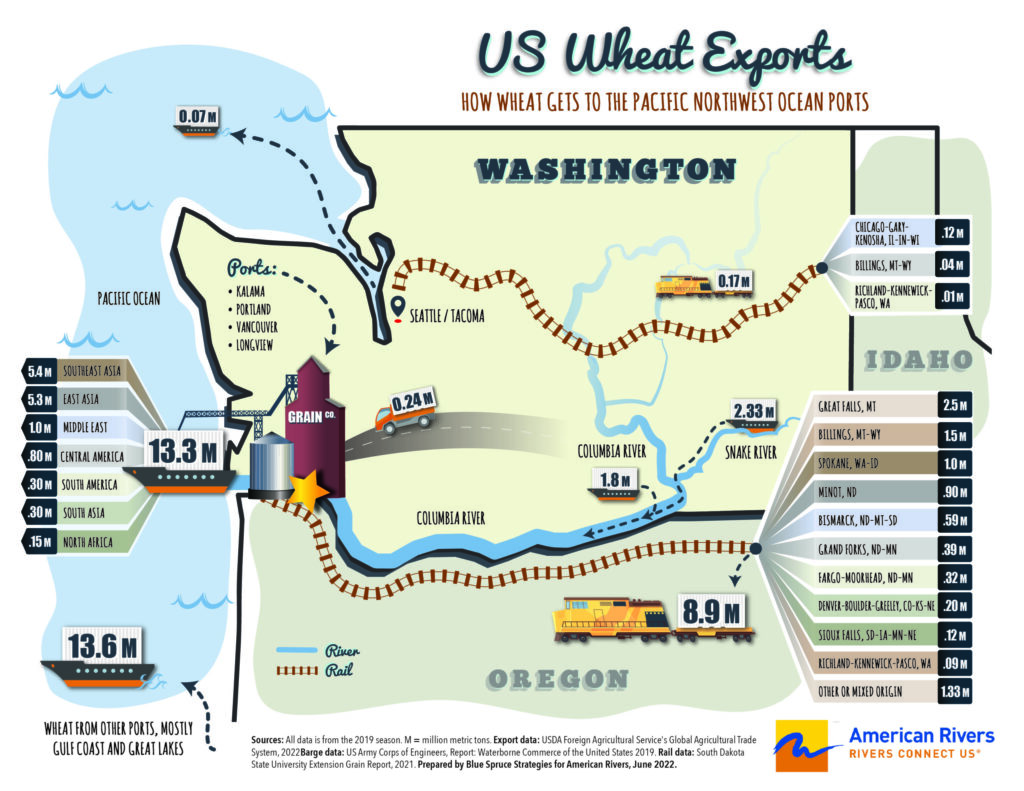Grain Transportation Study concludes that dam breaching has essentially no impact on carbon emissions from transportation, either positive or negative

Removal of the Lower Snake River dams could have a significant benefit or a minimal negative impact on carbon emissions from grain transportation
The Grain Transportation Study released on July 8, 2022 by Dr. Miguel Jaller shows that carbon emissions see only a minimal decrease or increase if the lower Snake River dams are removed. While these findings may seem surprising, they are consistent with the one other study that focused directly on this question (Casavant and Bell, 2001).
Using one set of emissions factors, the new model showed a decrease in CO2 emissions of 9.14%. Using another, the model showed a slight increase of 1.37%.
- The Jaller study includes an estimate of current truck miles
- The Jaller study used the most recent publicly available emissions factors from studies that included truck, rail, and barge emissions, while a previous study appears to have used data that are over 40 years old.
- Rail is increasingly efficient
- This conclusion is well-supported by credible, independent studies
This study, commissioned by the Water Foundation and American Rivers, estimates the carbon emissions and other air pollution generated when transporting grain across the Pacific Northwest under two scenarios: current emissions and the emissions generated should the four Lower Snake River dams be breached. This study by Dr. Miguel Jaller adds to the body of research on the lower Snake River dams and is a data point that shows dam removal should have relatively little impact on carbon emissions as grain transportation shifts away from barges.


